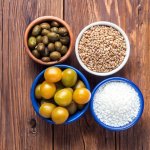I went to Greece and loved the Bougatsa I used to buy on the street. I thought I would share a recipe I found. I have never made it before. Does this look like the real deal? I don't want to dive in, only to realize the recipe was flawed from the beginning.
Ingredients
For the Custard:
- 4 cups whole milk
- 1 cup granulated sugar
- 1/2 cup fine semolina
- 4 large eggs
- 2 teaspoons vanilla extract
- Zest of 1 lemon (optional)
For the Assembly:
- 1 package (about 1 pound) phyllo dough, thawed
- 1 cup unsalted butter, melted
- Confectioners' sugar, for dusting
- Ground cinnamon, for dusting
Instructions
Preparing the Custard:
- In a medium saucepan, combine the milk and half the sugar over medium heat. Bring to a simmer, stirring occasionally to dissolve the sugar.
- In a large bowl, whisk together the remaining sugar and semolina. Add the eggs and whisk until the mixture is smooth and pale.
- Gradually temper the egg mixture by adding a cup of the warm milk while whisking constantly. Then, slowly pour the egg mixture back into the saucepan with the remaining milk, whisking continuously.
- Cook the mixture over low heat, stirring constantly with a wooden spoon, until it thickens and coats the back of the spoon (about 10-15 minutes). Remove from heat, stir in the vanilla extract and lemon zest (if using), and set aside to cool slightly. Cover with plastic wrap directly on the surface of the custard to prevent a skin from forming.
Preparing the Phyllo:
- Preheat your oven to 350°F (175°C). Lightly grease a 9x13 inch baking dish.
- Carefully unroll the phyllo dough. Cover the sheets with a damp towel to prevent drying out.
- Lay one sheet of phyllo in the prepared dish and brush with melted butter. Repeat this process, layering and buttering each sheet until you have used about half of the phyllo.
- Pour the custard over the phyllo layers, spreading evenly.
Assembly and Baking:
- Continue layering and buttering the remaining phyllo sheets on top of the custard.
- Using a sharp knife, score the top layers of phyllo into pieces – this will make cutting the bougatsa easier after baking.
- Bake for 45-50 minutes, or until the phyllo is golden brown and crisp.
- Remove from the oven and allow to cool for a few minutes.
- Before serving, sift generously with confectioners' sugar and sprinkle with cinnamon to taste.



